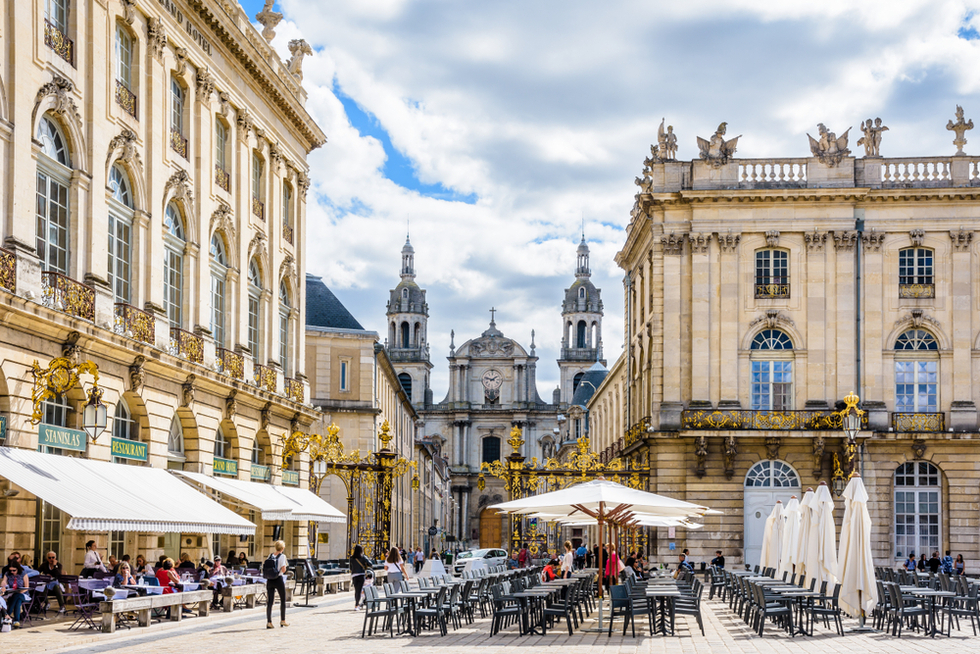The most monumental square in eastern France, and the heart of Nancy, is place Stanislas, named for Stanislas Leszczynski, the last of the ducs de Lorraine, ex-king of Poland, and father-in-law of Louis XV. It is pictured above. His 18th-century building programs transformed Nancy into one of Europe's most palatial cities. The square stands between Nancy's two most notable neighborhoods: the Ville Vieille (old town), in the medieval core, centered on the cathedral, Grande-Rue, and the labyrinth of narrow meandering streets that funnel into it; and the Ville Neuve, in the southwest. Built in the 16th and 17th centuries, when streets were laid out in straight lines, Ville Neuve centers on rue St-Jean.
Place Stanislas was laid out from 1752 to 1760 according to the designs of Emmanuel Héré. Its ironwork gates are magnificent. The square is fabled for the brilliant and fanciful railings, the work of Jean Lamour. His gilded railings with flowery decorations and crests evoke Versailles. The entire plaza is an all-pedestrian zone.
The Arc de Triomphe, constructed by Stanislas from 1754 to 1756 to honor Louis XV, adjoins the place de la Carrière, a tree-lined promenade leading to the 1760 Palais du Gouvernement. This governmental palace adjoins the Palais Ducal, built in 1502 in the Gothic style with Flamboyant Gothic balconies.
Note: This information was accurate when it was published, but can change without notice. Please be sure to confirm all rates and details directly with the companies in question before planning your trip.









